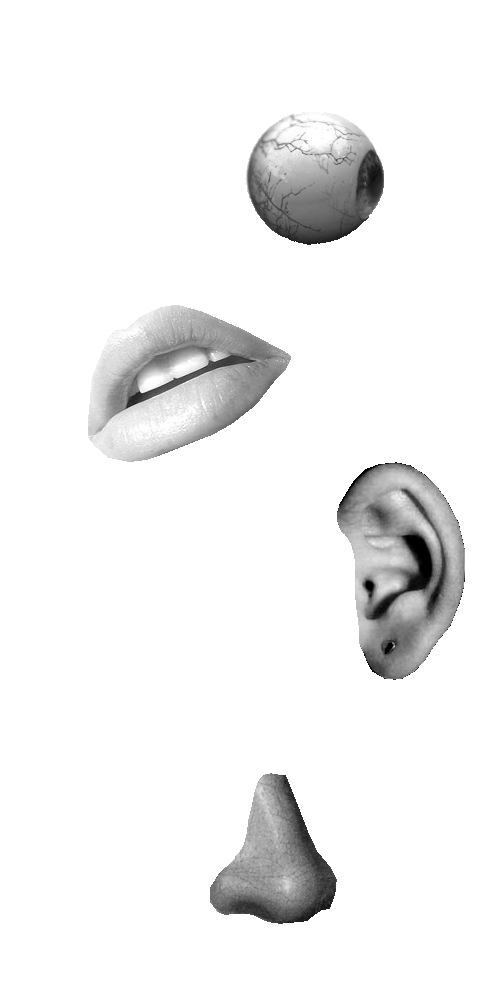
T H E F A C E
In film, the face plays an integral part in triggering the audience's reaction. It conveys emotions, speaks a universal language that surpasses dialectic hindrances. Filmmakers often play with the intrinsic behaviours of the human mind to create and elevate dramatic moments. The course films delve into the human psyche through visual stimulation; nothing is truly haphazard. What is seen goes through processes of analysis in the brain. Analysis in the human mind involves both what is presently being perceived and the information being prompted by the imagery. This is information that comes from memory, which has inevitably developed in parallel to current culture.
The face forms one of the most fundamental parts of the human body and identity; it is what the brain and human mind uses to best distinguish one person from another. Every human face is essentially made up of the same basic components: eyes, ears, mouth, and nose. It is the variation of these features that allow the human mind to differentiate between people, allowing this act of recognition to evoke certain details about the individual.
Through heavy exposure to art and media, certain fairy tale stereotype personas have been ingrained into western culture. In a typical fairy tale, the bad guy might have a gnarled nose and don a black cloak, while the handsome hero gallops in to save the day on a white horse.
The course films, however, do not follow this fairy tale scenario. They do not portray the simple storylines of a Manichaean world. Instead, they use the guise of what initially appears to be a simple plot to play out as the amuse-gueule to a much more intricately layered story.
02.plot development
03.architecture of the face
04.the uncanny valley
05.humanity
06.conclusion
07.sources